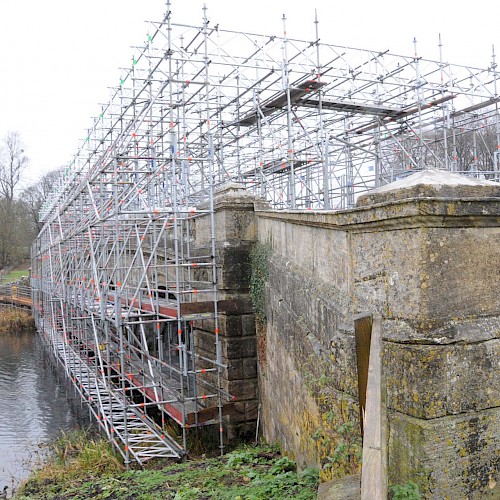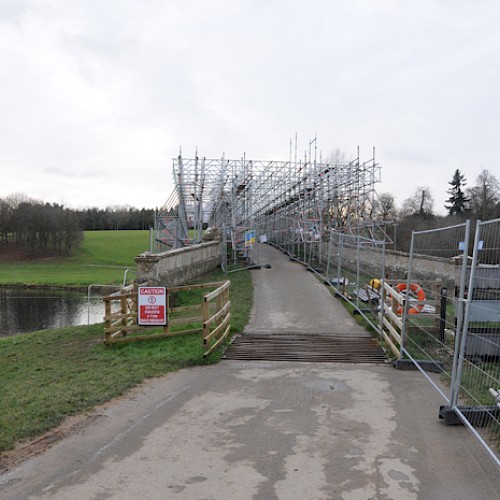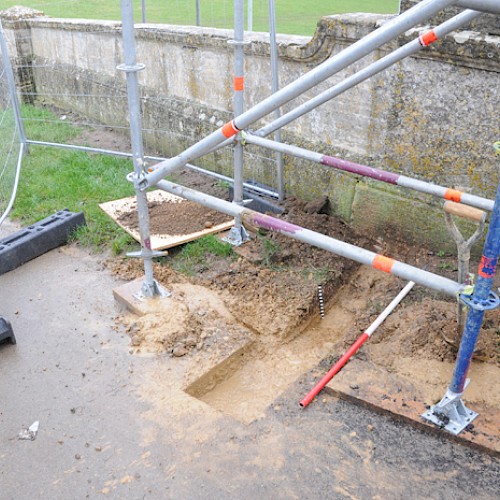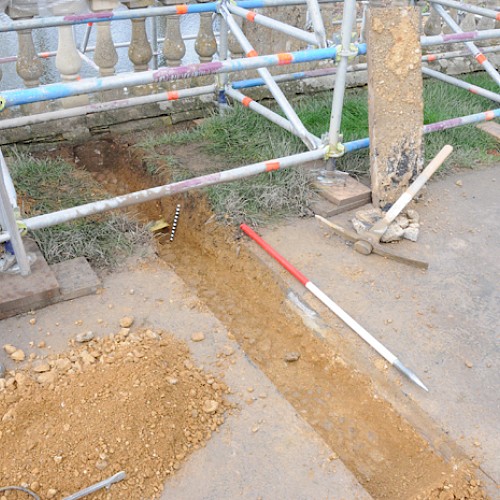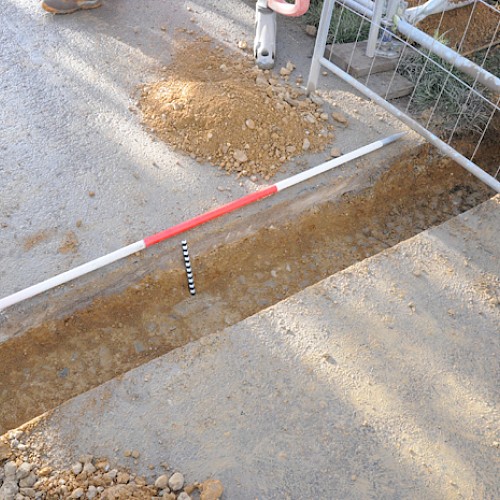Bladon Bridge (New bridge),
Blenheim Palace, Oxfordshire
Grade I Listed Building (NHLE: 1368023), Grade I Registered Garden (NHLE: 1000434), World Heritage Site (NHLE: 1000091)
Archaeological Watching Brief (Structural fabric) and Photogrammetry
OASIS: thejesso1-305046
An archaeological watching brief was undertaken to monitor the excavation of eight trial holes/trenches of varying sizes to provide supporting evidence for a Listed Building application to repair and resurface parts of Bladon Bridge on the Blenheim Palace Estate, West Oxfordshire.
The alterations to the landscape at Blenheim undertaken by Capability Brown in the 1770s included widening the River Glyme and building the Lince Dam. This created a wider stretch of water to the south over which William Chambers was commissioned to construct a ‘new bridge’ (now known as Bladon Bridge). This structure was designed as a triple-arched stone structure with a balustraded parapet. At either end were substantial rectangular piers each of which were intended to supported large lead sphinxes (removed in the Late 18th century).
The archaeological monitoring has confirmed that there were two separate phases of bridge deck, or roadway. The existing upper surface of tarmac laid was laid on a thick layer of hardcore with grass verges is assumed date to the second quarter/half of the 20th century. Beneath the hardcore the relatively intact remains of an earlier cobbled surface was discovered at a depth of c.18-24cm. This road surface had a pronounced camber that would have helped with water runoff, between which three stone bands or ribs were exposed running longitudinally along the bridge. One of these was in the center with the other two offset from the balustrade walls by c.0.65m. Whilst their intention may have been largely decorative, they may have also helped define footpath areas along the sides and a central area 3.3m in width for horses, or wheeled traffic.
It is likely that the cobbles represent the original road surface of the bridge designed by William Chambers in c.1772-3, the style of which would be consistent with road surfaces in use during the 18th century.
Scope of work: watching brief, photogrammetry
